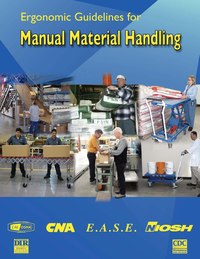
Photo from wikipedia
Introduction Ergonomics hazards in construction include ergonomic stresses such as bending, lifting, and repetitive movement and vibration; environmental stresses such as heat, sun, noise, poor illumination, and wet or damp… Click to show full abstract
Introduction Ergonomics hazards in construction include ergonomic stresses such as bending, lifting, and repetitive movement and vibration; environmental stresses such as heat, sun, noise, poor illumination, and wet or damp work; skin and respiratory exposure to chemicals and dust, as well as mental stress. In South Africa, these may add to the health problems experienced by construction workers because of poor community health, substance abuse, and inadequate health services. The erection and dismantling of support work are major activities on projects that entail a reinforced concrete structure, and present a range of ergonomics challenges. Methods A self-administered questionnaire survey was conducted among staff of a support work manufacturer and supplier attending two workshops presented by the author to determine, inter alia, the importance of project parameters, and ergonomics during the six project stages, the frequency at which their organisation considers ergonomics relative to various occasions, and temporary works design related aspects, and the extent to which temporary works design related aspects impact on ergonomics. Results Findings include: ergonomics is important in general, and during most of the seven project stages; ergonomics is considered relative to most occasions, especially during detailed design, and relative to most temporary works design related aspects, and there is a high level of awareness in terms of the extent to which temporary works design related aspects impact on ergonomics. Discussion The findings indicate that there is a higher level of awareness regarding ergonomics among the sample stratum than the general built environment population, especially permanent works designers. However, the source of ergonomics knowledge is informal as opposed to formal, and the respondents’ self-rating of their ergonomics, construction ergonomics, and designing for construction ergonomics skills, resonates with the findings of other research. There is a need for construction ergonomics to be embedded in tertiary built environment programmes, ergonomics continuing professional development (CPD), a construction industry ergonomics standard, and ergonomics practice notes.
Journal Title: Occupational and Environmental Medicine
Year Published: 2018
Link to full text (if available)
Share on Social Media: Sign Up to like & get
recommendations!